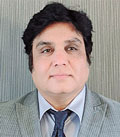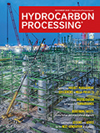Consequence modeling and risk analysis for safeguarding against jet fires
Due to their high momentum and erosive nature, sustained jet fires are one of the most hazardous types of fires that can threaten the integrity of process facilities.
IP: 10.1.103.123
This is a preview of our premium content. Thank you for your interest—please
log in or
subscribe to read the full article.
The Authors
Jadeja, S. - Fluor, Farnborough, UK
Shiv Jadeja is a Fluor Fellow and a global subject matter expert (SME) in fire protection engineering design, focusing on understanding fire phenomena and using holistic approaches to the management of fire and explosion hazards. With more than 20 yr of experience in various energy and chemical industry sectors, he has served in industrial fire and safety departments. A chartered engineer (CEng) and an NFPA-certified fire protection specialist (CFPS), Mr. Jadeja is also a Fellow of the Energy Institute and a professional member of the Institute of Fire Engineers and the Society of Fire Protection Engineers.
Haris, N. - Fluor, Farnborough, UK
Nishin Haris is a Process Safety Engineer with 11 yr of experience in process safety, loss prevention, functional safety and risk assessment in the oil, gas, refining and petrochemicals industries. He has worked as a consultant with EPC companies, and has been involved in pre-FEED, FEED and EPC stages of brownfield, greenfield and revamp projects. Mr. Harris has broad experience in technical HSE, and is certified as a TUV functional safety engineer. His core experience includes consequence analysis, QRA, fire and explosion risk assessment (FERA), toxic gas risk assessment, HAZOP and functional safety studies, and layer of protection analysis (LOPA).
Selirio, A. - Fluor, Philippines
Alexander Selirio is a Process Engineer with Fluor Philippines. He has 10 yr of process engineering experience on a wide range of projects in the energy and chemicals industries, supplemented with experience process simulation, jet fire modeling and technical safety.
Related Articles
From the Archive









Comments